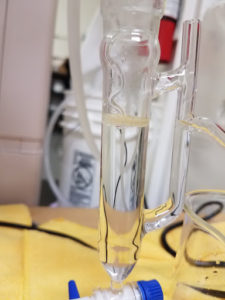While the rise of CBD marked 2015 and the flood of CBD rich and CBD-only products illuminated 2016, this is the year of the terpene (Turr-Peeen), or Terp for short.
A term from your organic chemistry textbook; a simplified definition says: Terpenes are easily evaporated fragile scent molecules used by plants, fungi, and other living organisms to attract pollinators (Roses), repel herbivores (Lemons), and attract predators of herbivores (1). For example, read about the relationship between parasitic wasps and corn.
This definition leaves most people asking, what does that have to do with my medicine? To make things easier, I have digested a definition of terpenes for the cannabis community:
Terpenes are the essential oil building blocks used in the production of resins (Cannabinoids) and are responsible for the variety of specific effects, tastes, and smells unique to each strain.(3)
Terpenes
Terpenes or “Terps” are simultaneously both the most popular buzzwords and misunderstood terms across the industry. Each day gives rise to new chatter from members of the community about “the terps on this nug” or “the terpiest dab the other day”. But what does it really mean? And is it important, or just this year’s hype?
It is this author’s opinion that the greatest asset to come from all of this talk about terpenes is the development of an enhanced vocabulary for communicating about medicine between producers and consumers and consumers with other consumers.
What terpenes are and how they will affect us when we consume them is becoming more accessible everyday, this is due to a growing cannabis focused scientific community, companies specializing in terpene products, and the effort of all sorts of cannabis educators – breeders, growers, processors, budtenders, speakers, and bloggers.
Terpene educated consumers are making more well informed decisions than ever before; accurately selecting cannabis medicine based upon a desired outcome…. to feel a certain way or target symptoms of an illness.

Terpene Test
A patient who has had a positive experience with this sample of Tahoe OG is no longer held hostage to one strain grown by one grower. With this data in hand a patient can shop and compare other strains with the potential for offering a similar experience.
Terpenes allow for a more descriptive report to be shared about each sample of medicine than is available by showing only THC and CBD. This chemical information is a part of what is known as the “Chemotype” (Key-mo- type) of a cannabis sample.
Chemotype describes the “unique chemical profile of plants which are practically identical to one another in appearance but vary significantly when it comes to application as a medicine”. (4) Chemotype describes the chemical (read internal) composition of a plant given its specific environment, inputs, handling, and processing.
It is this additional Chemotypic (Key-mo- tip-ic) information which allows consumers to identify what it is about certain strains that makes them effective or pleasing.
While there is still a long way to go in researching terpenes and developing therapies around what is discovered, it is encouraging to know that cannabis technology is improving at what seems like the speed of light.
I have a dream that one day cannabinoid and terpene testing will be available for every cannabis product consumed worldwide; allowing for travel and consumption with confidence due to a universal language for communicating the effects of the medicine, like how much of the world consults the daily nutritional values on the packing of food.
While I do not believe this day is far off, it has not yet come and until then most of the world will continue choosing cannabis medicine as they always have, from personal experience, sensory input, (smells and appearance) or the recommendation of a friend or budtender.
by Ben Cassiday
Non-linked Sources
1. Ed Rosenthal’s Marijuana Grower’s Handbook
About the Author
 Ben Cassiday is a lifelong cannabis activist and business owner focused on building tools for the growing cannabis industry. He is a founding partner of the GreenWay Cannabis Network and True Terpenes – a cannabis research and development think tank. When away from the his desk in Portland, Oregon he can be found with his girlfriend and their pug in the back yard gardening, running in the streets of NoPo, exploring cascadia, or dreaming of Kauai, HI. You can find him on Facebook & Insta @terpetarian.
Ben Cassiday is a lifelong cannabis activist and business owner focused on building tools for the growing cannabis industry. He is a founding partner of the GreenWay Cannabis Network and True Terpenes – a cannabis research and development think tank. When away from the his desk in Portland, Oregon he can be found with his girlfriend and their pug in the back yard gardening, running in the streets of NoPo, exploring cascadia, or dreaming of Kauai, HI. You can find him on Facebook & Insta @terpetarian.
